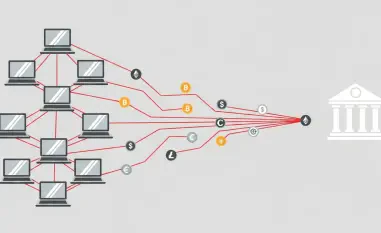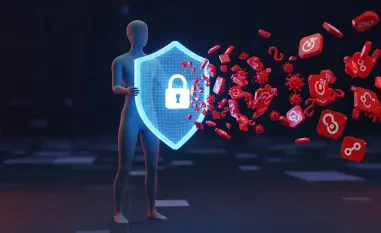What happens when the protectors of digital fortresses are too exhausted to stand guard? In Security Operations Centers (SOCs) across the globe, analysts are buried under an avalanche of alerts, spending sleepless nights chasing false positives while fearing the one threat that slips through, a silent crisis of burnout that erodes team morale and jeopardizes security long before a cyberattack even strikes. Yet, a solution lies in smarter workflows powered by real-time tools and automation, promising to transform fatigue into focus and chaos into control.
The stakes couldn’t be higher. With cyber threats multiplying at an alarming rate, SOC teams are the first line of defense for organizations, tasked with detecting and neutralizing dangers in real time. Burnout isn’t just a personal toll; it’s a systemic risk that can lead to costly oversights. Addressing this issue with innovative technology isn’t merely about improving workplace wellness—it’s about safeguarding the very infrastructure that keeps businesses and data secure in an increasingly hostile digital landscape.
Unveiling the Burnout Epidemic in SOCs
The pressure-cooker environment of an SOC is a breeding ground for exhaustion. Analysts often juggle thousands of alerts daily, many of which turn out to be irrelevant noise. Studies indicate that up to 80% of their time is spent on repetitive, low-value tasks such as manual log analysis and data verification, leaving little room for strategic thinking or rest. This relentless cycle not only dulls mental acuity but also heightens the likelihood of critical errors.
Beyond the sheer volume of work, the sophistication of modern cyberattacks adds another layer of strain. Threat actors continuously evolve their tactics, forcing teams to stay on high alert with often limited resources. The result is a workforce pushed to the brink, where burnout becomes a pervasive threat to both individual analysts and the broader security posture of organizations relying on their vigilance.
Root Causes of SOC Fatigue
Alert overload stands as a primary culprit in driving SOC burnout. Traditional systems frequently deliver fragmented data, compelling analysts to spend hours piecing together the puzzle of a potential threat. This manual effort, often under tight deadlines, creates a state of constant stress that wears down even the most dedicated professionals over time.
Compounding the issue is the monotony of routine tasks. From exporting reports to copying indicators of compromise (IOCs), these mundane activities drain energy that could be better spent on complex investigations. Without intervention, such repetitive workloads foster a sense of futility among team members, further diminishing their capacity to respond effectively to real dangers.
Lastly, the challenge of context switching exacerbates the problem. Analysts often navigate multiple disconnected tools to validate threat data, wasting precious time chasing outdated or irrelevant information. This inefficiency not only slows down response times but also contributes to mental fatigue, creating a vicious cycle that undermines the entire SOC operation.
Revolutionizing SOCs with Real-Time Solutions
Breaking free from the burnout cycle demands targeted strategies that tackle these pain points head-on. Real-time tools offer a lifeline by providing immediate context for alerts, drastically reducing the guesswork involved in threat triage. For instance, interactive sandboxes can visualize an entire attack chain—from initial execution to data theft—in mere seconds, empowering analysts to prioritize genuine risks over noise.
Automation plays a pivotal role as well, offloading tedious tasks that bog down productivity. Advanced platforms now handle everything from report generation to CAPTCHA solving and QR code link extraction, mimicking human interaction while saving hours of manual effort. This allows analysts to focus on high-impact work, preserving their mental sharpness for critical decision-making.
Integration of live threat intelligence further streamlines operations by eliminating the need for constant tool-hopping. By feeding fresh, verified IOCs directly into existing systems, teams can act on current data without the burden of manual validation. Such innovations ensure that analysts remain focused on response rather than research, fundamentally reshaping the SOC workflow for the better.
Proof in Practice: Data-Driven Transformations
The impact of these technologies is not just theoretical but backed by compelling evidence. A recent survey revealed that SOC teams using automation and real-time analysis achieved a 95% acceleration in threat investigations, alongside a 20% reduction in workload for entry-level analysts. Escalations to senior tiers dropped by 30%, reflecting a more efficient and less stressed operation.
Real-world examples underscore this shift. One SOC team reported a complete turnaround in their triage process after adopting interactive analysis tools, visualizing a phishing attack exploiting a popular platform in under a minute. What once took hours of log scrutiny became a clear, actionable insight, enabling confident dismissal of false positives and rapid response to true threats. These outcomes illustrate how smarter tools directly translate to sharper, more resilient teams.
Steps to Strengthen SOC Resilience
Transforming an SOC from a burnout hotspot to a high-performance hub requires actionable measures rooted in real-time technology. First, deploying interactive analysis tools for alert triage is essential. Platforms that map out every process, network action, and file change provide instant visibility, allowing teams to test recent threat samples and witness attack chains unfold live for faster prioritization.
Next, automating repetitive workflows should be a priority. Identifying manual tasks like IOC collection or report creation and integrating automation solutions can reclaim significant time. Platforms that combine autonomous actions with analyst oversight ensure both speed and precision, balancing efficiency with control to maintain investigation quality.
Finally, connecting SOC tools to live threat intelligence feeds is a game-changer. Accessing continuously updated IOCs from global investigations eliminates redundant checks on expired data, keeping analysts within familiar environments. This seamless integration cuts down on context switching, enabling teams to act swiftly and confidently on the most current insights available.
Reflecting on a Path Forward
Looking back, the journey to alleviate SOC burnout revealed a critical truth: the human element in cybersecurity had been stretched to its limits by outdated methods and overwhelming demands. The adoption of real-time tools and automation marked a turning point, lifting the burden of repetitive tasks and fragmented data from analysts’ shoulders. Teams once on the edge of exhaustion found renewed focus, proving that technology could be a powerful ally in protecting both data and defenders.
Moving ahead, organizations must commit to equipping SOCs with these innovations as a standard practice. Prioritizing tools that offer instant clarity, automated efficiency, and integrated intelligence will ensure that analysts remain sharp and engaged. The next step lies in scaling these solutions across industries, fostering a future where burnout becomes a relic of the past and SOCs stand stronger than ever against evolving threats.













